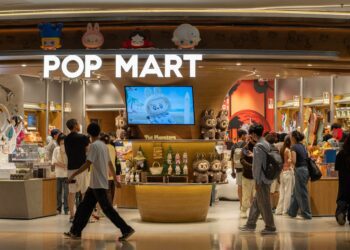Why is fast fashion worthy of close study? For one thing, it is growing faster than the traditional apparel market. Just think: The two largest clothing retail companies in the world — Spain’s Inditex (owner of Zara) and Sweden’s Hennes & Mauritz (owner of H&M) — rely on the fast-fashion business model.
What is fast fashion?
First, the professors spend some time defining their terms. After all, the fast-fashion business model can only be understood in terms of fast fashion itself.
Fast fashion is not Chanel, Prada or similar high-priced luxury brands. Fast fashion is, by definition, much more affordable for frequent shoppers. Also, fast fashion is not Gap, Uniqlo or similar suppliers of affordable staple items. T-shirts and jeans may stay on the shelves season after season, while fast fashion offerings ride trends, like surfers catching waves.
Quick Response (QR) production
Quick Response (QR) was originally developed in the textile and apparel industry as a set of standards for information exchange and supply chain management that shortened lead times and increased supply chain efficiency. Over time, the use of the term QR has evolved to indicate a simple concept: postpone all risky production decisions — e.g., commitments to purchases that may not be needed in case of low sales — until there is enough evidence that the market demand is there. QR thus allows a reduction of excess inventory, although per-unit costs related to manufacturing and shipment may increase.
Information is a key driver of QR decisions. Demand forecasting in fashion works best when early sales data are used to predict subsequent sales more reliably. New designs are quickly produced in small batches to collect data early and often.
Along with information, production factors are fundamental for QR. Eschewing seasonal collections and working item by item allow fast-fashion companies to accelerate lead times across the board. Importantly, the seasonal bottlenecks of traditional production processes are avoided.
In addition, production schedules may be sped up through the use of nearshore suppliers, located close to the target market. For U.S. companies, nearshore suppliers may be located in Mexico and Central America. For European companies, factories may be located in Bulgaria, Morocco, Portugal, Romania or Turkey. Fast-fashion companies try to anticipate how much of what goes where at the last minute, to send inventory where it’s needed most.
Dynamic assortment planning
The second operational pillar for fast fashion is the use of frequent assortment changes throughout the season. Store offerings are updated as often as daily — not just a few times a year, as in the traditional model. These constant changes have been proven to increase store traffic.
To optimize the timing of new products into the mix, dynamic assortment planning is required. The co-authors note that demand for any new product will typically decrease over time as newer products tend to get better displays and generate more interest, all else remaining equal.
Constantly changing inventory in stores works well in combination with QR production, controlling inventory and keeping margins healthy. Fast fashion becomes a truly compelling business model when solidly resting on both of these pillars.
Sustainability as a fundamental concern
Is fast fashion sustainable over the long term? What might its global impact be?
In a more recent interview for IESE Business School Insight magazine, Oscar Garcia Maceiras, who became CEO of Inditex in November 2021, said: “We want to lead the transformation of the industry through responsible management in collaboration with a good number of organizations, including IndustriALL, the international trade union federation with which we have a pioneering Global Framework Agreement to put the worker at the center, promote continuous social dialogue and ensure optimal labor standards.”












